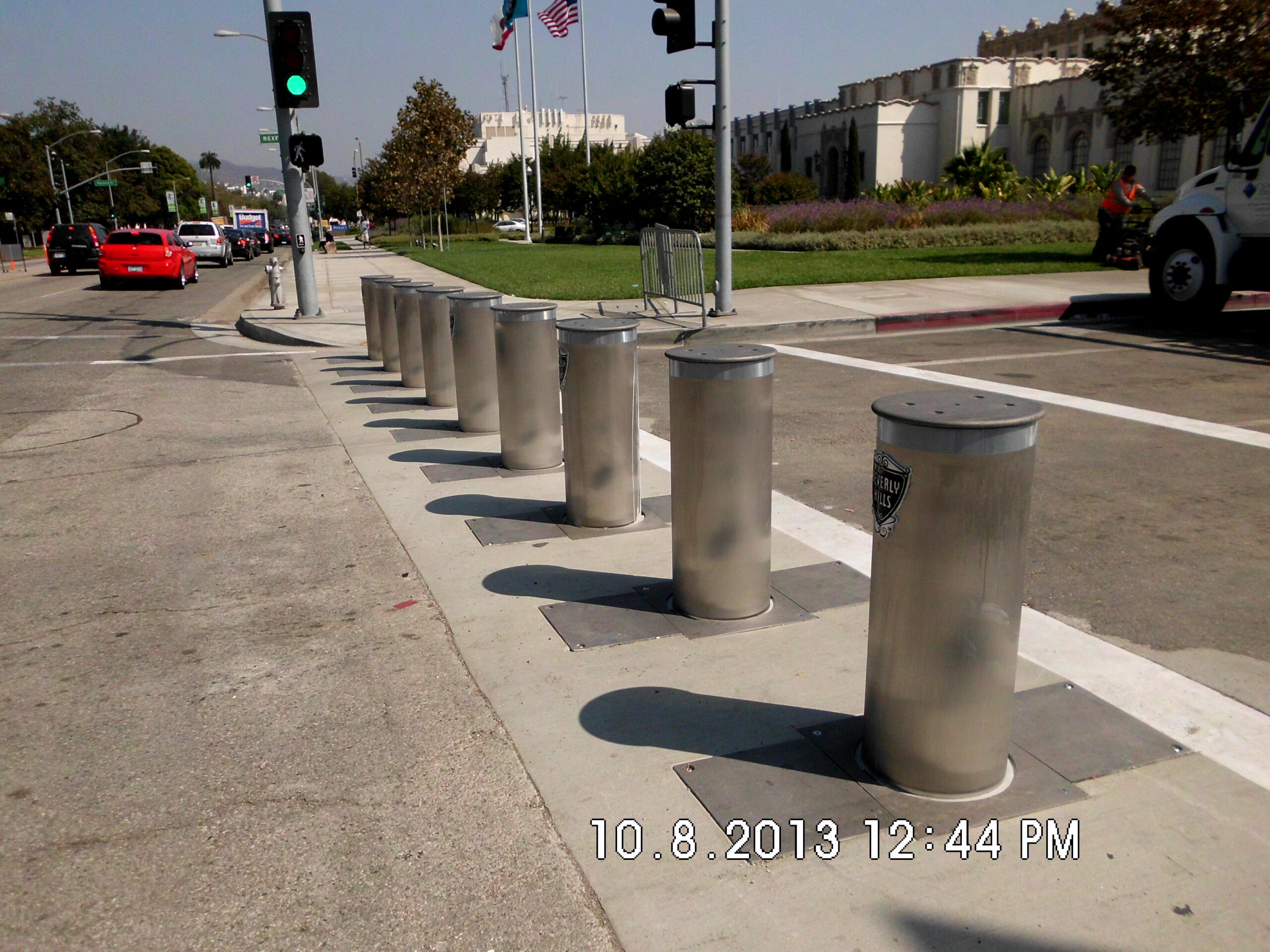5 Bollard Statistics: the Facts Behind Increased Safety
Bollards are fixed barriers that restrict physical access to an area. They are often used to limit vehicle traffic. Pedestrians can easily walk in the spaces between well-placed bollards, but cars cannot pass through. Examining key bollard statistics provides insight into how they improve safety.
5 Key Bollard Statistics That Highlight Their Value

There is little question that bollards improve security and safety. Municipalities, military bases, schools, housing developments, and private businesses use them to restrict vehicle access. The following seven statistics help show their value.
1. The Bollard Market Is Growing
The global bollard market is expected to reach an astonishing $4512.9 million by 2032. That is a significant increase over its 2024 level of $2859.8 million. According to the Bollards Market industry report, the majority of this growth comes from commercial and residential users.
2. Bollards Can Help Prevent Up to 100 Building Crashes Each Day
Bollards placed in front of commercial buildings prevent vehicles from crashing into them. This keeps people inside safer and helps prevent theft. According to the Storefront Safety Council, there are 100 vehicle crashes into buildings each day. These cause 16,000 injuries and 2,400 deaths per year.
Deploying bollards in front of more commercial buildings can help to drastically lower this sobering bollard statistic.
3. Bollards Must Meet Crash Testings Standards
Safety bollards must undergo extensive testing to meet industry standards. High-security bollards should meet the standards established by the American Society for Testing and Materials. Other agencies that have bollard standards for specific applications include:
- International Building Code
- National Fire Protection Association
- Occupational Safety and Health Administration
Delta Scientific builds bollards that meet ASTM F2656 standards. This standard establishes a penetration rating for vehicle safety barriers which is expressed as an M-rating. The highest M-rating is M50.
The ASTM M-rating clearly indicates the impact speed a bollard can withstand from a 15,000-pound vehicle. A bollard rated at M30 can effectively stop a 15,000-pound truck traveling at 30 miles per hour. One rated at M50 can stop the same truck traveling at 50 MPH.
4. The Infrastructure Investment and Jobs Act Encourages Bollard Installation With $25 Million in Grants
The 2021 legislation known as the Infrastructure Investment and Jobs Act or H.R. 3684 provides significant funding to help install bollards. According to the text of the act, approved projects may access up to $25 million in funding ($5,000,000 per year, 2022 through 2026) for approved bollard installation projects.
This funding was included because bollards are shown to reduce the risk to pedestrians in high-traffic areas. The law specifically indicates that bollards can also help minimize the risks of terrorist activities in areas with large numbers of pedestrians.
5. Proper Bollard Installation Matters

When properly installed, safety bollards are virtually immovable by anticipated forces. This is why they are such a valuable access control tool. There are three main ways to install bollards so they perform as intended.
A traditional safety bollard mounts to a deep foundation that extends several feet below the surface. The foundation must provide a secure anchor to ensure crash ratings are met. It is also where retractable bollards remain when they are not deployed.
Delta Scientific has several options for shallow foundation bollards. These require as little as 14 inches of excavation for secure placement, while still providing M50 crash ratings.
There are also portable bollards that can be installed quickly for temporary purposes. These typically bolt onto the surrounding foundation. Portable bollards are more secure than cones for short-term pedestrian protection.
The Role of Safety Bollards in Access Control
The statistics about bollards clearly show that they play an important role in security plans. They effectively stop vehicle traffic from entering restricted areas, which reduces crashes with pedestrians and buildings.
Bollards can deter terrorist activities in areas with heavy foot traffic by restricting vehicle access. This is a crucial role and a large part of why funding for them was included in the Infrastructure Investment and Jobs Act.
Placed in front of commercial buildings, they reduce the number of thefts following intentional crashes. Retractable bollards enhance security in government and military facilities where security personnel can deploy them to stop cars from entering or exiting the grounds.
Explore More Bollard Statistics
Delta Scientific is a leader in facility access control solutions. We have extensive experience designing, testing, and manufacturing safety bollards and barriers. Contact us to learn more about bollard statistics and see how they fit into your site security plan.
Share This Story, Choose Your Platform!
